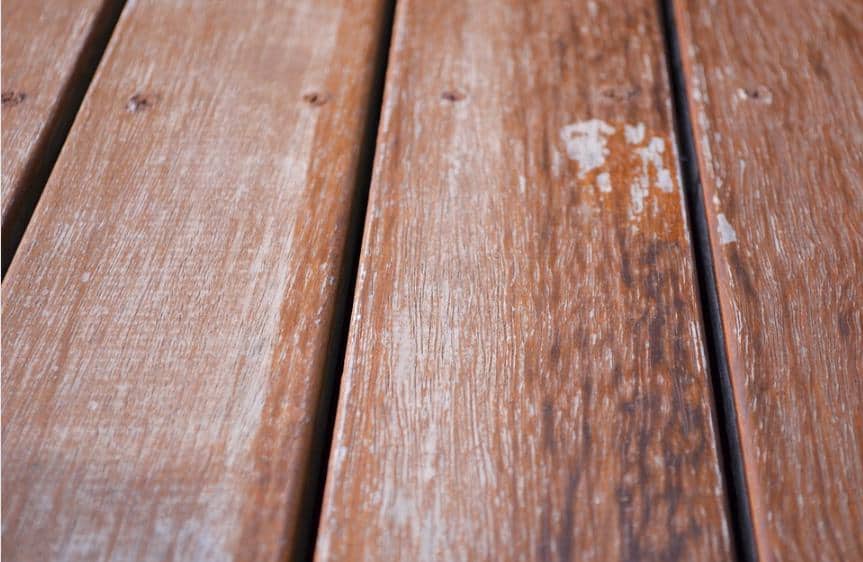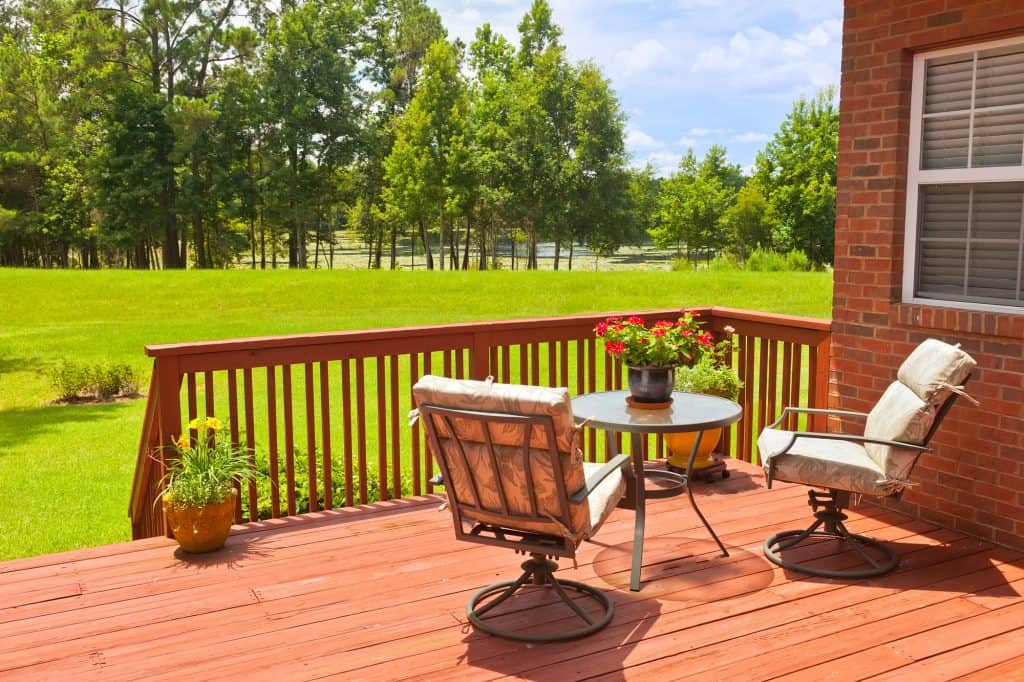We have previously discussed how a plate compactor is one of the best tools for compressing dirt where you need to build a patio, but what if there is a manhole or drain where you are looking to build it? Can you build decking over drains or manholes?
This is a very common issue that people face when decking a patio, especially in the US or UK suburbs. Not only is the ground uneven, but there may also be manholes in the way that may come in the way. Building around it may not be an option, considering how they often have a way of being smack in the middle of your work area.
It is perfectly safe to build decking over drains or manholes, provided you leave some contingency when constructing, in the sense that they are accessible. For drainage systems, you may have to leave quite a bit of area accessible, but if you have a manhole, just place some turf over it and put a potted plant (real or otherwise) – and you’re done! Let’s consider how to do it, and some real-life examples of the same.
Decking Over Drains or Manholes

Before we get into the specifics, let us consider the example of Brighton, a city in England. If any of you live there or get a chance to visit the city, go to the fountain in the Old Steine. You’ll find that the fencing around the fountain is grassed very evenly, except for the east section. Halfway through, you’ll find a section that is removable.
If you sneak a peek under the removable section, you will find that there is an entrance into the sewer system there that leads to an overflow chamber. This was done long ago and is still in place. Not only does it exist, but the section also works remarkably well.
If they can deck over drains and manholes and it’s working for them, it can for you, as well.
Now, getting back to the topic; can you build a decking over drains or manholes? Is it safe? Does doing so mean you’re violating codes?
What is Decking?
Decking basically involves smoothing out an area and building a flat surface on top of it that can support the weight of a structure on top of it. Naturally, the bigger and higher a structure, the deeper you have to dig to build a foundation under it.

It is typically done outdoors and is slightly elevated from ground level to ensure it can survive rains and small floods. Decking may or may not connect to the main structure of your house. Manholes or drains in the way of your decking can be annoying, to say the least.
Decking Over Drains or Manholes – What Can Go Wrong?
When building near or over drains and manholes, it is important to be careful not to damage or block the pipes. even the slightest leaks or blockages can lead to odor nuisances, which in turn lead to health problems and environmental damage.
Remember, no one will bat an eye over you building on top of drains or manholes (provided you give access to the same by placing removable material or hatches on top) unless you damage something.
Leaky sewage water or even bad odor can be a cause for health and environmental damage throughout the community. Both, US and UK health codes are very strict about this. So when working around drains or manholes, it is important to exercise caution.
Most cities throughout the UK require that if you’re about to work near a drain or manhole, you get permission from local authorities first. These permissions aren’t hard to get and you’ll only lose a day, two at most, so plan accordingly.
The US is more lenient in this regard and only requires that you get an inspection done after you’re done or when you’re about to sell a house where you have decked over drains or manholes. At this point, having a removable section or inspection hatch can be a lifesaver.
So, Can You Build Decking Over Drains or Manholes?
Yes, you can. But when decking a patio or even a garage, remember to put in removable panels or inspection/maintenance hatches to allow access. You can even install joists, provided they don’t cross over manholes.
Chances are that nobody will bother you even after you’re done decking until a problem arises. When that happens, you are likely going to have to destroy anything on top of drains or manholes, so it is better to plan accordingly instead of struggling later on.
When laying decks, you have the option of building a concrete deck, marble (bravo, by the way, if you’re going with marble), or wood. Go with whatever material you like, but do not, under any circumstances, pour concrete or place a marble slab on top of drains or manholes.
And even still, if you accidentally pour concrete you can always go at it with a chisel and hammer – the most you’ll lose here is about $20 (the portion you’ll have to break). On the other hand, if you apply marble, you will have to break the whole slab, which costs a lot more.
We recommend working with TREATED WOOD when decking over a drain or manhole and building a hatch over it. The hatch should be large enough for a person to easily go in and come out without it presenting a risk of closing automatically.
This means that using automatic closers or spring mechanism for your hatch is also prohibited.
Decking over Drains or Manholes
When we undertook the same project, we have to lay our deck with 100mm x 25mm cedarwood (treated, of course), laid on brick pillars. Use regular mortar for the bricks. By doing this, you are able to adjust the level of your frame, ensuring that your patio/garage is even.
Not only that, the brick pillars underneath give water ample room to flow and drain away.
When it comes to drains or manholes, the same pillar method should be used. We built the frame as we would for a normal deck and patio and when working around the drain covers, we screwed the decking boards to the frame.
These screws had much more durable and larger screw heads to ensure that we can easily remove the same when need be. For us, this method is much simpler (and safer) than trap doors. However, make sure that the tools required to open up the framework (just enough to get access to drains or manholes) are accessible.
The reason why we recommend screwing wood in place is that trap doors and inspection hatches have a way of being uneven – not to mention you have to hide the same with some other ornaments and decorations.
Trap doors and hatches are almost always visible, even if you put turf on top. On the other hand, if you simply screw over wood, you won’t even know the difference!
Step-By-Step Guide to Deck Over Drains or Manholes
Now, let’s consider how to make a deck over drains and manholes. First, let’s take a look at concrete decks. For the sake of these guides, we are going to assume there is just one manhole or drain in your work area.
- Start by buying some straight lumber. Make sure there are no holes within, or you’re going to end up having to sand it.
- Create a form representing the boundary of your deck.
- Create another form that sits around your manhole or drain cover. For manholes, make sure the frame is at least 6-8 inches larger than the cover. If there is a drain, make a frame 4-6 inches wider than the drain.
- Compact the dirt in your work area. For a patio, it is recommended that you compress dirt by 4-8 inches.
- Put both frames in place, take a step back and give your design a mental overview.
- If you’re satisfied, start mixing concrete or simply call a concrete mixer. This will depend on the height you are looking to give your patio.
- Place a weed membrane and start pouring. Make sure the frames are wedged into the dirt below and concrete isn’t leaking out. Tap the frame lightly to make sure there are no air bubbles.
- Give your concrete the finish you want, all while making sure no concrete is leaking into the manhole.
- Once cured, check whether it is level or not and make adjustments as necessary.
- Place a hatch on top of the manhole or drain, or simply put some wood in place. You now have yourself a deck.
If you are looking to build a wooden decking, we recommend you go with cedar, considering its durability. Remember, you need cured wood for the best results!
- Gather material. You will need;
- Decking boards
- The timber of your choice
- Wood screws. Make sure some of them are larger than others. These are going to be ones that you will frequently loosen for access.
- Concrete blocks/bricks
- Weed membrane
- Drill driver
- A saw. A mightier or table saw will be best suited here. With a handsaw, you’ll likely stay at it for quite a while.
- Start by preparing an area for your deck. Compress the same, as mentioned in the guide above. i.e., 4-8 inches.
- Place blocks/bricks to elevate your deck.
- Create a frame with the wood of your choice. Join the frame with wood screws. Depending on the width of timber you’re using, you may need longer screws for this.
- Make sure the frame reflects the shape of the deck you’re looking for.
- Place the frame on top of the concrete blocks. Take a step back to see whether it’s elevated enough or not.
- Check whether the frame is level. Make adjustments accordingly.
- Start placing joists. Cut them such that they are a tight fit in your frame. Insert them with the help of a mallet and then join, using screws. MAKE SURE THERE ARE NO JOISTS ABOVE THE DRAIN OR MANHOLE.
- Support joists with additional legs or bricks underneath.
- You have a frame ready for decking boards. Make adjustments, if necessary, to the decking boards and start laying them. Use adhesive to keep the boards in place until you’re finished.
- Once done, take a step back and analyze. If satisfied, screw each deck board. Make sure the boards sit flush with each other.
- Since there won’t be much support for deck boards on top of manhole or drains, cut the cedar wood according to size and screw it on top. Use larger, durable screws here that you can pull out when needed.
And you’re done! You now have a deck over your drain or manhole, that is not only code compliant but also robust.
